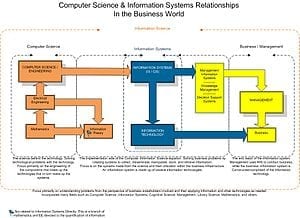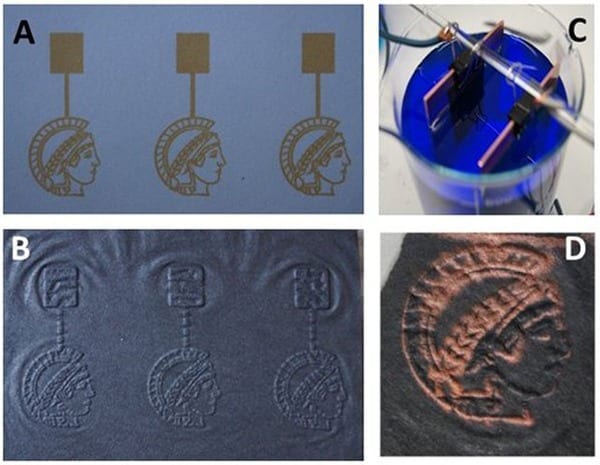
Harnessing the unique features of the quantum world promises a dramatic speed-up in information processing as compared to the fastest classical machines.
Scientists from the Group of Philip Walther from the Faculty of Physics, University of Vienna succeeded in prototyping a new and highly resource efficient model of a quantum computer – the boson sampling computer. The results will be published in the upcoming issue of the renowned scientific journal “Nature Photonics”.
Quantum computers work by manipulating quantum objects as, for example, individual photons, electrons or atoms and by harnessing the unique quantum features. Not only do quantum computers promise a dramatic increase in speed over classical computers in a variety of computational tasks; they are designed to complete tasks that even a supercomputer would not be able to handle. Although, in recent years, there has been a rapid development in quantum technology the realization of a full-sized quantum computer is still very challenging. While it is still an exciting open question which architecture and quantum objects will finally lead to the outperformance of conventional supercomputers, current experiments show that some quantum objects are better suited than others for particular computational tasks.
The computational power of photons
The huge advantage of photons – a particular type of bosons – lies in their high mobility. The research team from the University of Vienna in collaboration with scientist from the University of Jena (Germany) has recently realized a so-called boson sampling computer that utilizes precisely this feature of photons. They inserted photons into a complex optical network where they could propagate along many different paths. “According to the laws of quantum physics, the photons seem to take all possible paths at the same time. This is known as superposition. Amazingly, one can record the outcome of the computation rather trivially: one measures how many photons exit in which output of the network,” explains Philip Walther from the Faculty of Physics.
How to beat a supercomputer
A classical computer relies on an exact description of the optical network to calculate the propagation of the photons through this circuit. For a few dozen photons and an optical network with merely a hundred inputs and outputs, even today’s fastest classical supercomputer is unable to calculate the propagation of the photons. However, for a boson sampling computer this ambitious task is within reach.
The Latest Bing News on:
Photonic quantum computers
- Confused by the quantum computing race? It’s just like the Oscarson May 7, 2024 at 12:00 pm
(And yet, Cate still lost the Oscar. Tragic.) PsiQuantum, on the other hand, is pursuing photonic quantum computing, which uses particles of light, or photons, as qubits. (Photonic computing is like ...
- Australia raises eyebrows by splashing A$1bn into US quantum-computing start-up PsiQuantumon May 7, 2024 at 8:16 am
The Australian government has controversially announced it will provide A$940m (£500m) for the US-based quantum-startup PsiQuantum. The investment, which comes from the country’s National Quantum ...
- Photonic Scales Up Its Executive Leadership Team With Quantum Leaders in Key Leadership Roleson May 6, 2024 at 9:57 am
Photonic Inc., a leader in distributed quantum computing in silicon, announced it is scaling up its executive leadership team with industry forerunners in the areas of research and development, ...
- Photonic Hires Global Quantum Leaders in Key Leadership Roleson May 2, 2024 at 6:20 am
Photonic Inc., a leader in distributed quantum computing in silicon, today announced it is scaling up its executive leadership team with industry forerunners in the areas of research and development, ...
- Photonic Hires Global Quantum Leaders in Key Leadership Roleson May 2, 2024 at 3:20 am
VANCOUVER, British Columbia–(BUSINESS WIRE)–Photonic Inc., a leader in distributed quantum computing in silicon, today announced it is scaling up its executive leadership team with industry ...
- Photonic Hires Global Quantum Leaders in Key Leadership Roleson May 1, 2024 at 5:00 pm
VANCOUVER, British Columbia — Photonic Inc., a leader in distributed quantum computing in silicon, today announced it is scaling up its executive leadership team with industry forerunners in the areas ...
- How will gate-based quantum computers scale-up in future?on May 1, 2024 at 1:46 pm
Evidence suggests that for photonic, it could be as low as 2:1, for neutral atom and trapped ion nearer 10:1 – while superconducting could require more than 1000:1. To some extent, this has ...
- Only quantum physics can explain an investment this weirdon April 30, 2024 at 8:52 pm
The federal government has replaced sports rorts with a quantum rort that will not make real revolutions like AI go any faster.
- The $1 Billion Bet on Quantum Computers That Process Lighton April 30, 2024 at 12:30 pm
PsiQuantum wants to make quantum computers in the same way as microchips are made today. So how is it doing?
- 3 Quantum Computing Stocks That Could Be Multibaggers in the Making: April Editionon April 27, 2024 at 11:00 am
The post 3 Quantum Computing Stocks That Could Be Multibaggers in the Making: April Edition appeared first on InvestorPlace.
The Latest Google Headlines on:
Photonic quantum computers
[google_news title=”” keyword=”Photonic quantum computers” num_posts=”10″ blurb_length=”0″ show_thumb=”left”]
The Latest Bing News on:
Quantum computer
- Scientists uncover quantum-inspired vulnerabilities in neural networkson May 9, 2024 at 1:51 pm
In a recent study merging the fields of quantum physics and computer science, Dr. Jun-Jie Zhang and Prof. Deyu Meng have explored the vulnerabilities of neural networks through the lens of the ...
- Researchers develop compiler acceleration technology for quantum computerson May 9, 2024 at 1:47 pm
Researchers have succeeded in developing a technique to quickly search for the optimal quantum gate sequence for a quantum computer using a probabilistic method.
- NATO and quantum computing are part of the cybersecurity agenda for IBM Consultingon May 8, 2024 at 5:50 pm
IBM collaborates with NATO to fortify cybersecurity. Enhancing security visibility management across NATO networks, IBM builds a customized solution.
- Quantum Computing Revolutionizes Energy, Agriculture, and Material Scienceon May 8, 2024 at 9:01 am
Quantum computing provides more novel and reliable ways to accelerate progress in mitigating climate change and does so faster than other known technologies. For instance, it can execute optimization ...
- Physicists Develop Groundbreaking Device for Advanced Quantum Computingon May 8, 2024 at 4:16 am
Researchers have made a significant advancement in quantum computing by adapting a microwave circulator to precisely control the nonreciprocity between a qubit and a resonant cavity. This innovation n ...
- The Future Of Climate Could Be In Quantum Computingon May 7, 2024 at 7:43 am
Quantum computing has a number of advantages over other technologies in terms of accelerating our progress with reducing climate change.
- 'World's purest silicon' could lead to 1st million-qubit quantum computing chipson May 7, 2024 at 2:00 am
Scientists engineer the 'purest ever silicon' to build reliable qubits that can be manufactured to the size of a pinhead on a chip and power million-qubit quantum computers in the future.
- New super-pure silicon chip opens path to powerful quantum computerson May 7, 2024 at 2:00 am
Researchers at the Universities of Melbourne and Manchester have invented a breakthrough technique for manufacturing highly purified silicon that brings powerful quantum computers a big step closer.
- How Schrödinger's cat could make quantum computers work betteron May 6, 2024 at 8:00 am
A quantum bit inspired by Schrödinger’s cat can resist making errors for an unprecedentedly long time, which makes it a candidate for building less error-prone quantum computers ...
- Pritzker eyes a $20 billion quantum-computing campuson May 6, 2024 at 3:31 am
PsiQuantum would be the anchor of much larger project that Illinois hopes will make it the center of this next-generation computing technology.
The Latest Google Headlines on:
Quantum computer
[google_news title=”” keyword=”quantum computer” num_posts=”10″ blurb_length=”0″ show_thumb=”left”]










